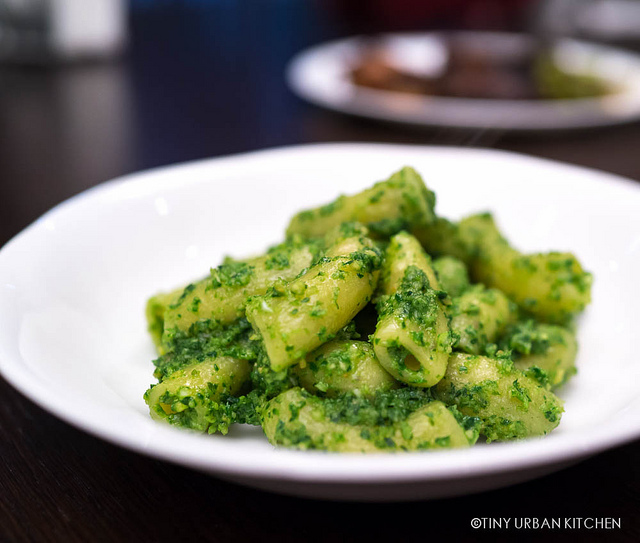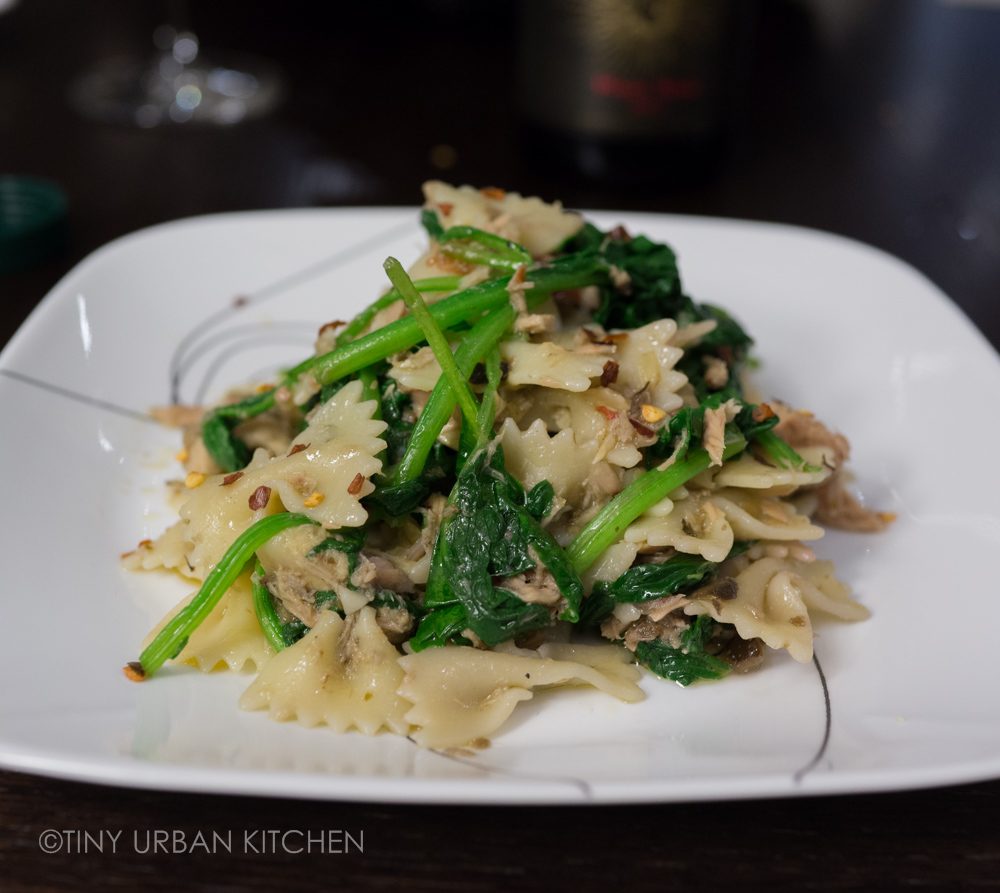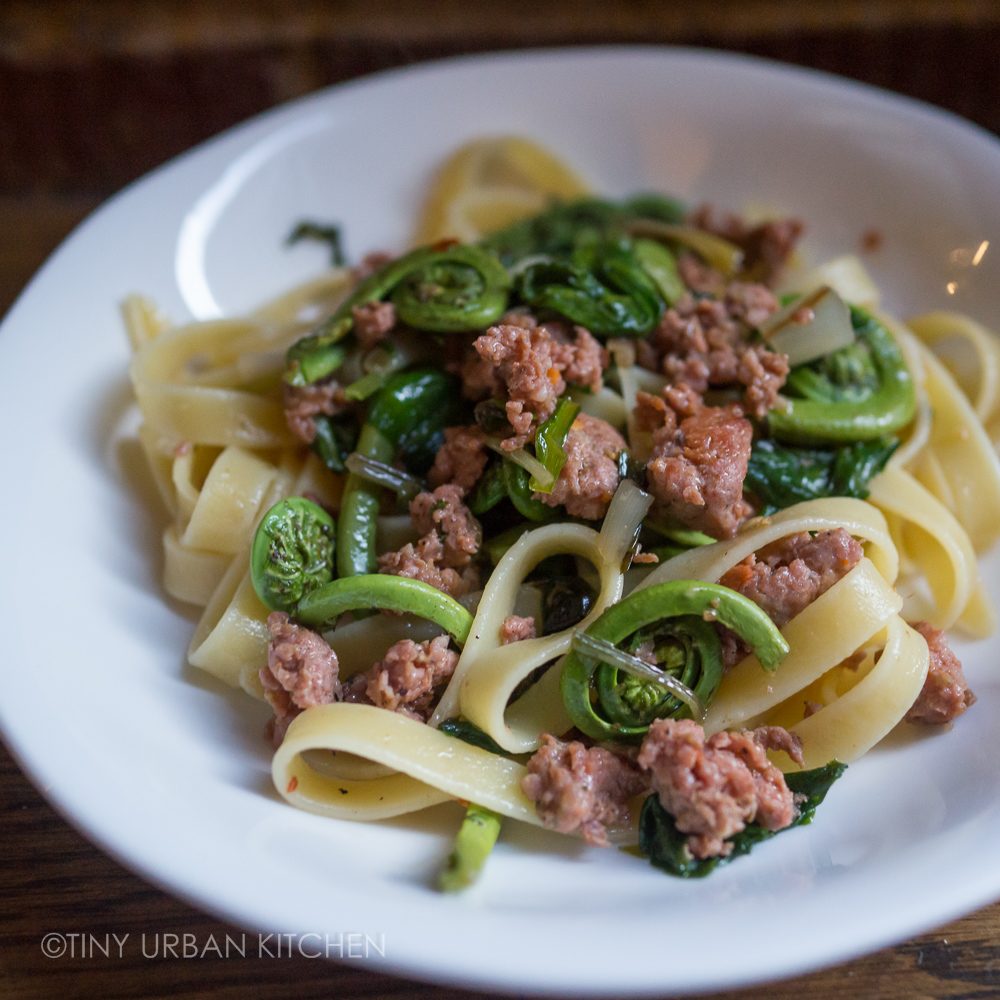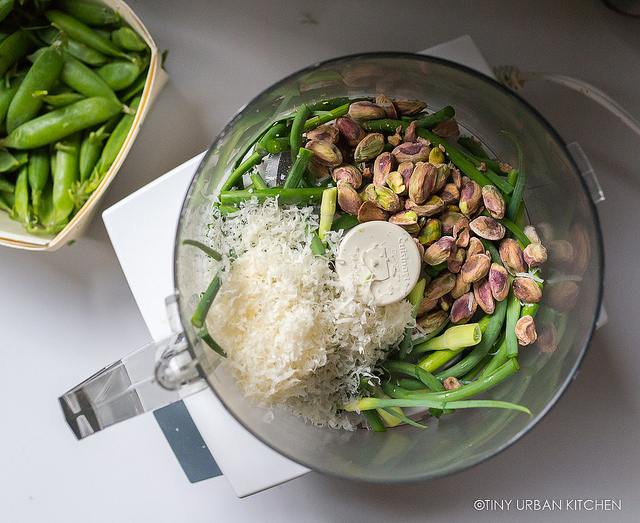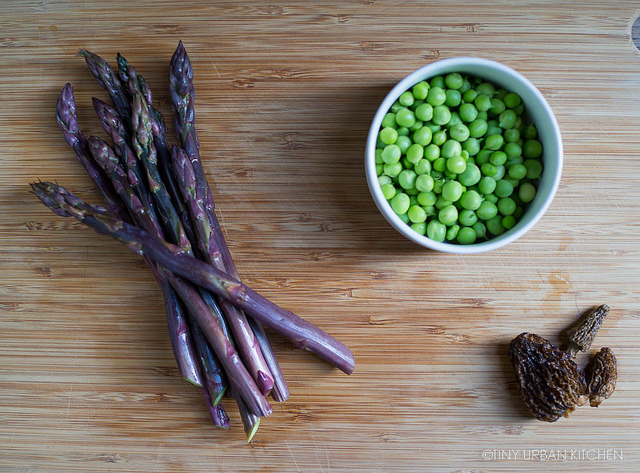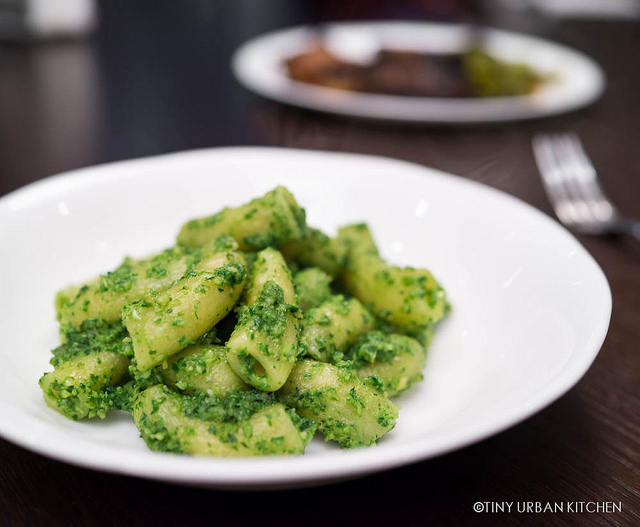
Perhaps I'm ignorant about food, or maybe the craze has just popped up recently, but I had never heard of ramps until about 2 years ago.
And it wasn't until last spring that I tasted ramps for the first time (at a restaurant) and proceeded to fall in love with that pungent, garlicky flavor.
And then it wasn't until this spring - just a couple weeks ago, in fact - that I finally saw them in the market. I pounced on my chance to pick up a few stalks so that I could finally, finally try cooking these gorgeous plants myself.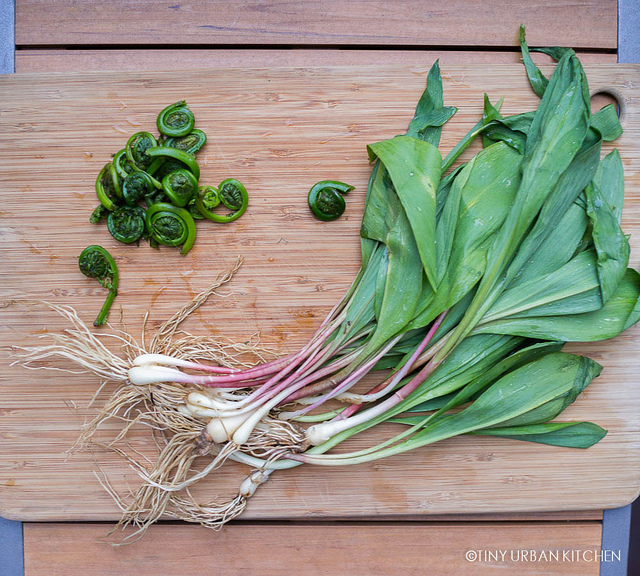
Ramps, also known as spring onions, wild garlic, or wild leeks, grow wild throughout the forests in Massachusetts and pretty much up and down the East Coast. These vegetables are one of the first things to pop up in the spring, and people go crazy when they appear for their short, short season.
Ramps are not really cultivated, so if you see ramps on the menu or the market, someone has gone out foraging for them. Some have expressed concern about the fanatacism surrounding ramps leading to over harvesting of the delicate plant. In fact, Quebec has outlawed the sale of ramps since 1995, called it a "threatened" species.
I think ramps are still growing healthily in many parts of New England. However, I wouldn't be surprised if there are patches that have been picked in an unsustainable manner.
With this knowledge and understanding about ramps, I approached my first (and likely only encounter) with ramps this spring with a heightened level of appreciation and awareness. 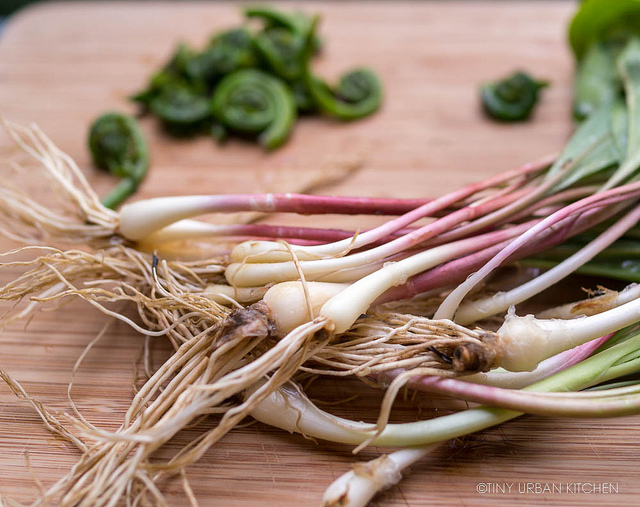
Ramps are both garlicky and "onion-y" - pungent, almost spicy, and very fragrant. I think they work super well in pesto because they act both as the green "leafy" agent and the strongly flavored "garlicky" agent.
I always hated peeling all those garlic cloves when making traditional basil pesto, so this saves a previously annoying step!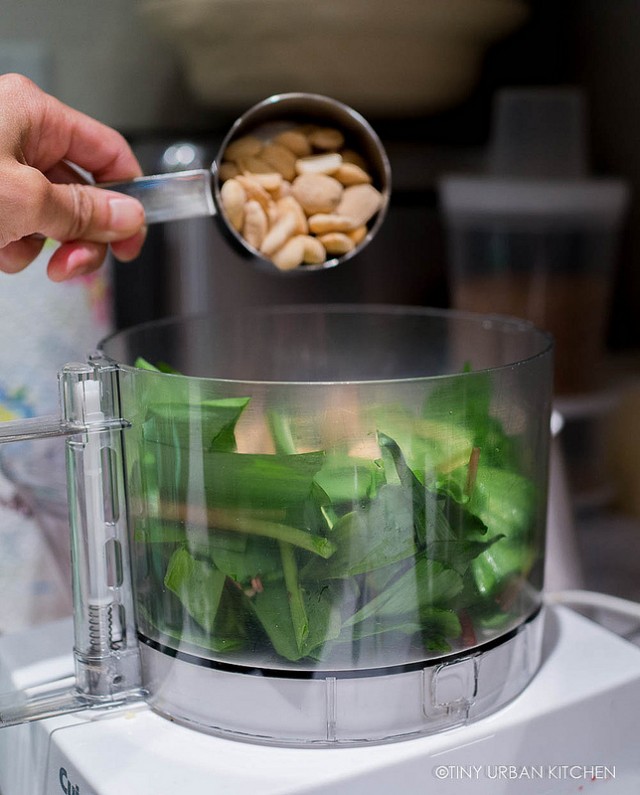
Making ramp pesto is super easy and there's really no "exact" recipe. Essentially, you need ramps, some sort of nuts, some sort of hard, salty cheese (grated, please), and oil. As for nuts, try using toasted walnuts, pistachios, hazelnuts, or almonds. You could also use pine nuts, the traditional nut used in basil pesto.
And that's it!
Throw everything into a food processor except the oil. Give it a whirl until you have a chunky puree.
Turn the machine back on and start adding the oil in a stream. Add enough until you are happy with the consistency.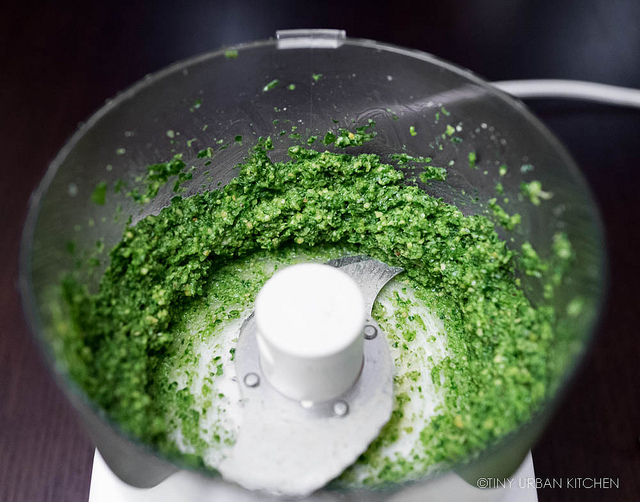
You want a smooth paste.
The whole process takes all of 2 minutes, really.
Taste test it, though. You can add a bit of salt if you think it needs it (it all depends on how salty your cheese was). Alternatively, you could add more cheese too if you so desire. It's really up to you.
Once you're satisfied with the flavor of the pesto, you can do all sorts of things with it. You can freeze a portion of it for later use. You can throw a dollop of it in soup (yum!). You can eat it with bread, or you can serve it with pasta!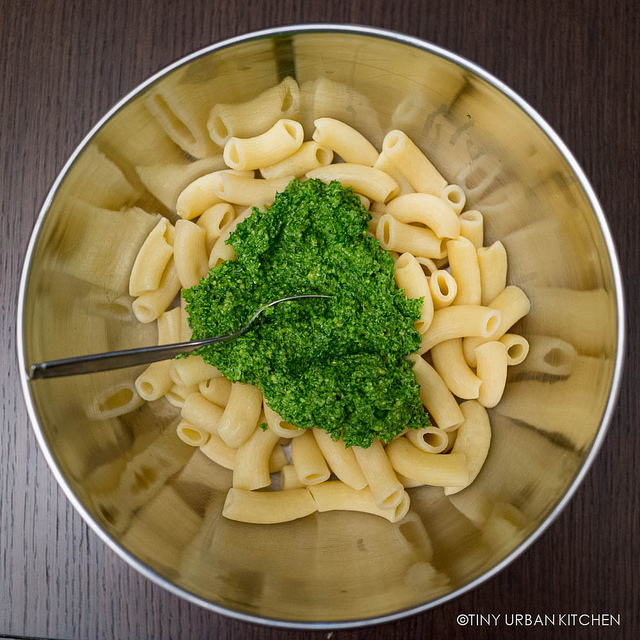
You can see what I chose to do. I eye-balled the whole thing and didn't really measure exactly. I just added enough pesto so that it nicely covered all the pasta I had made. If you have leftover pesto, you can always freeze the rest and eat it with crostini or a tomato mozzarella salad.
In my case, there was quite a bit of pesto (compared to pasta). I don't mind a saucier pasta at all, so I threw it all in. It's your call.
Ramps Pesto
Serves about 2
1 bunch of ramps (see my photo below, maybe 10 small stalks?)
½ cup Parmesan cheese, finely grated
½ cup nuts (many recipes use walnuts or pistachios; I had marcona almonds on hand, which worked fine)
~⅓ cup olive oil, give or take
optionally salt
1 lb fresh pasta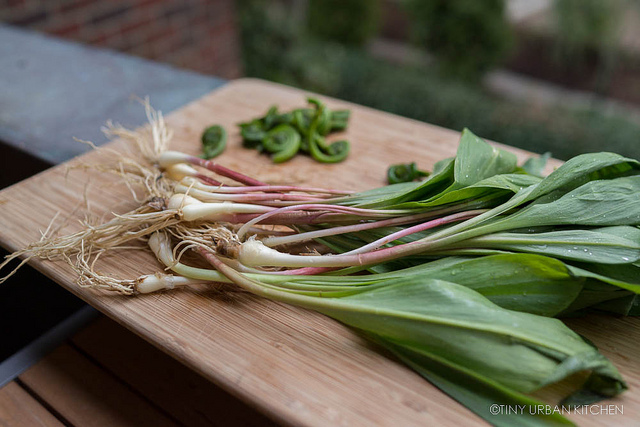
All Rights Reserved













